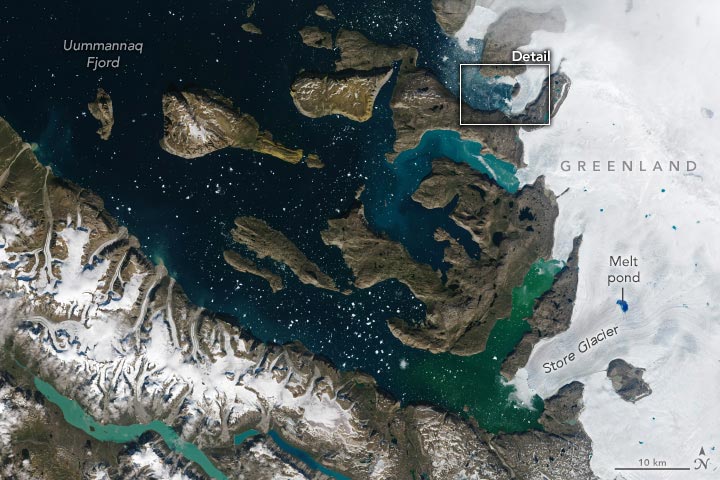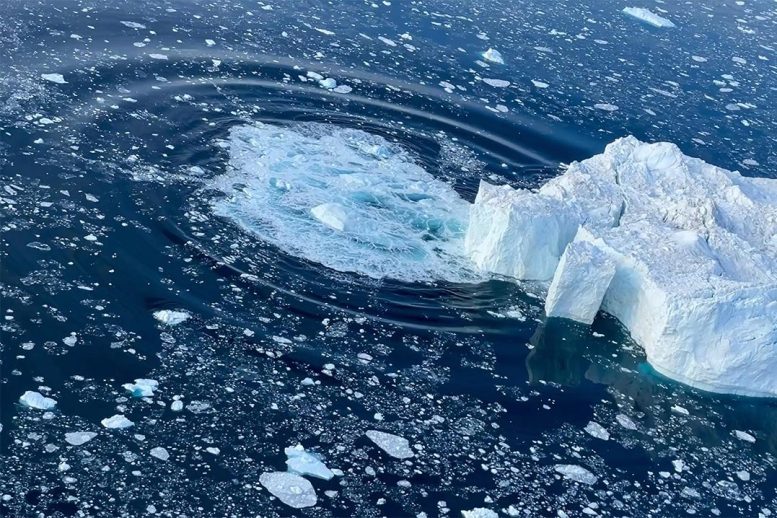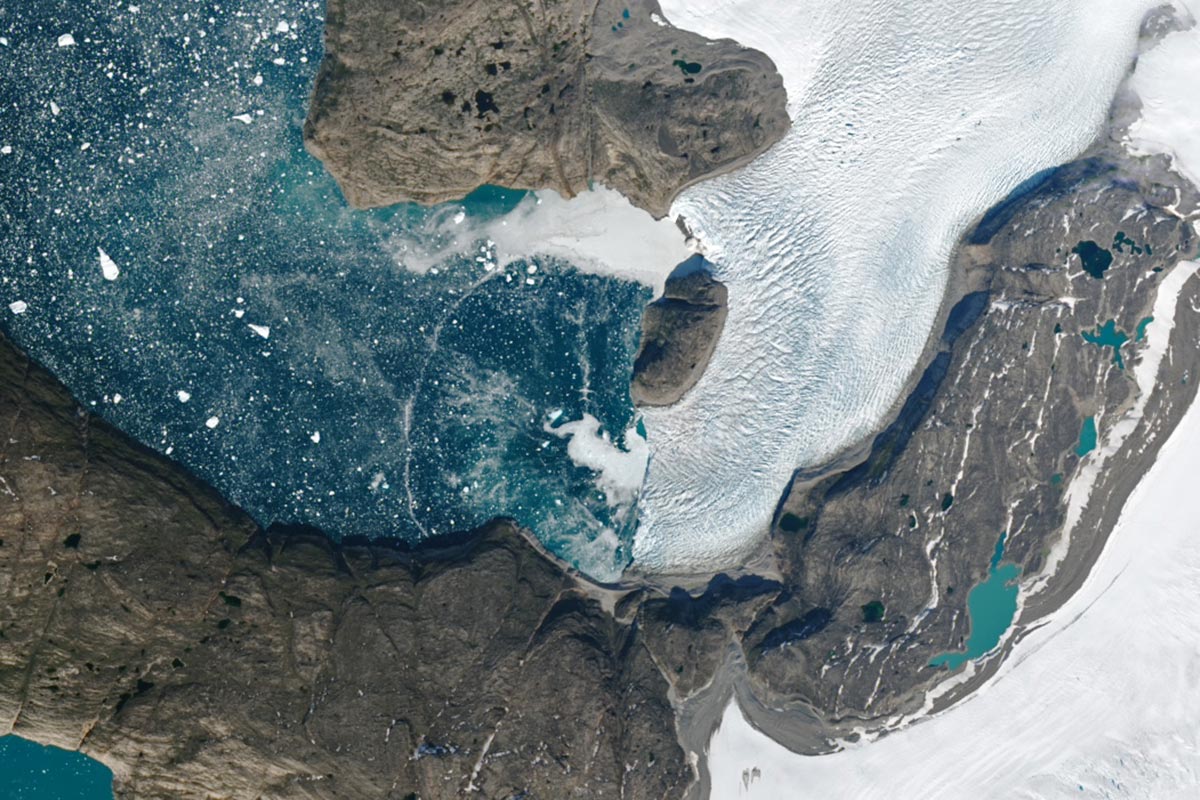
Satellite image captured by the Operational Land Imager-2 on Landsat 9 on August 3, 2023.

Satellite image captured by the Operational Land Imager-2 on Landsat 9 on August 3, 2023.
Scientists have some ideas about what might have caused a thin arc that spanned a fjord in Western Greenland.
In summer, the fjords around Greenland are commonly littered with angular pieces of ice that have sloughed off from the island’s numerous outlet glaciers. But on August 3, 2023, the ice on a fjord in western Greenland was joined by a peculiar arc.
The arc is visible in the detailed version (top) of these images, acquired on August 3 by Landsat 9’s Operational Land Imager-2 (OLI-2). The thin, white feature spans much of Itilliarsuup Kangerlua, a tributary fjord of the Uummannaq Fjord system in Western Greenland. It extends about 2.6 kilometers (1.6 miles) from the front of Kangilleq glacier.
The origin of the feature remains somewhat of a mystery, but satellite images of the arc initially published on Planet Snapshots inspired discussion about some possible causes. The leading hypothesis favored by Dan Sugara geomorphologist at the University of Calgary, is that the arc is the result of a large iceberg that broke off from the front of the glacier.
An iceberg breaking from the glacier—above or below the water’s surface—would displace water, creating a wave. Josh Willis, an oceanographer at ” data-gt-translate-attributes=”[{[{“attribute”:”data-cmtooltip”, “format”:”html”}]”>NASA’s Jet Propulsion Laboratory, and Mike Wood, a glaciologist at Moss Landing Marine Laboratories, agree that a newly formed iceberg is a likely explanation. “It’s such a perfect circle. To me, it does look like a wave caused by a calving event,” Willis said. He also provided an aerial photograph, shown below, of a similar circular wave caused by a chunk of ice falling off of an iceberg that he witnessed in September 2021 during NASA’s Oceans Melting Greenland (OMG) mission.

September 3, 2021
Both scientists noted, however, that another phenomenon is also known to displace water in the fjords around Greenland. “There could also be water pushing ice away from the glacier face caused by an underwater plume,” Willis said. That is, fresh meltwater from below a glacier that enters salty fjord water will rise up in a “plume,” displacing the water around it.
Based on satellite images alone, it might never be known with certainty what caused ephemeral feature. The arc has since dissipated, returning the fjord to its more common, less geometric appearance.
NASA Earth Observatory images by Wanmei Liang, using Landsat data from the U.S. Geological Survey. NASA photo, a still from this videowas provided by Josh Willis (NASA Jet Propulsion Laboratory).










